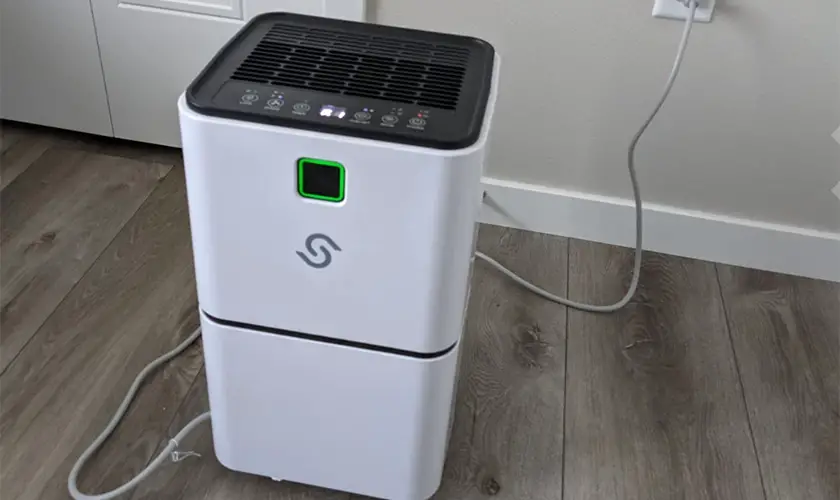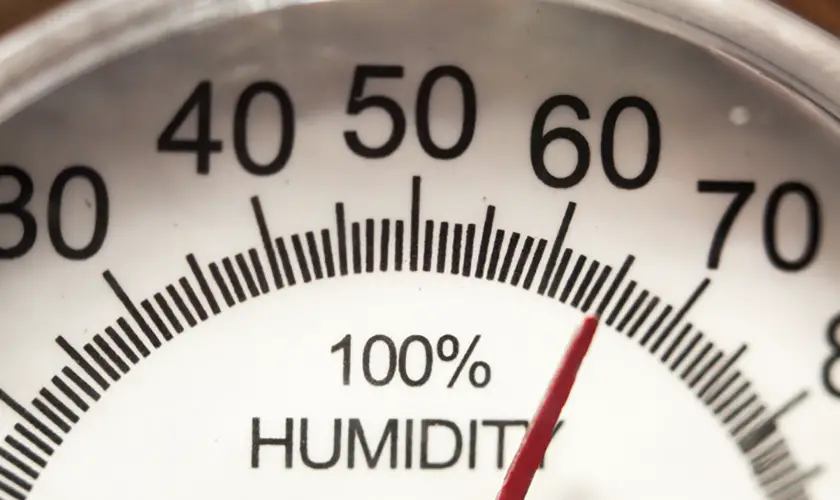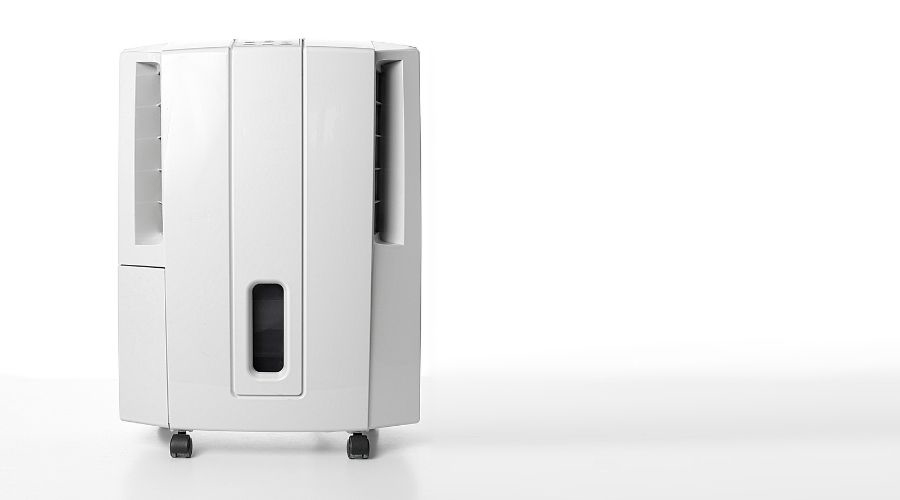
Dehumidifiers are one of the best ways to reduce humidity within any space. Unfortunately, some of these electrical appliances can be pretty costly. Why is that so?
The cost of a dehumidifier does not count on one single thing. The appliance’s affordability depends on many factors, including:
- Environmental requirements
- Unit Size
- Quality of construction
- Retail costs
- Installation requirements
- Maintenance requirements
- Energy demands
- Additional enhancements
You must first determine if you need a dehumidifier before worrying about whether you can afford one. And then, you can consider factors that influence its purchase, operating, and maintenance costs before deciding what to buy.
Do You Need a Dehumidifier?
Ideally, the space where you spend your time should have 30% to 50% humidity levels to experience maximum comfort. Anything below that range would create dry air.
Anything above that range would make a very humid environment. The latter problem is what a dehumidifier seeks to address.
Generally, higher temperatures enable the air to hold more moisture, while low temperatures reduce the air’s ability to retain water particles. That is why hot and humid climates make it difficult to sweat and cool down.
It is worth noting that dehumidifiers measure how much moisture they remove from the environment in any given 24-hour period. The measurement bases itself on pints ranging from 1 to 90 pints or more.
The best way to determine your humidity levels is to buy a hygrometer and measure it. However, if you do not want to spend money on the instrument, you can watch for signs pointing out excess moisture in your home. Below are some of them.
- Mold and mildew growth: mold tends to grow in humidity levels exceeding 60%. You might spot it on your ceilings or walls. And you may also smell it.
- Fogginess or condensation: It tends to appear on windows or glass doors. It may also appear on pipes, mirrors, and toilet bases.
- Clammy air: It indicates too much moisture in the air that’s not going anywhere.
- Musty smell: You will likely smell this in your space even with no water leakages from the outside or signs of mold or mildew growth. The basement and closet are possible culprits.
- Rotting or warping signs: These may appear on furniture and floors.
- Water stains: These may be visible on walls and ceilings all over your home.
- Increased insect infestations: Insects such as dust mites tend to be attracted to warm and damp environments.
- Damaged paintwork: The painted surfaces in your home may become blistered or cracked. They may also peel due to excess moisture.
- Physical body symptoms: Due to the growth of mold and mildew and increased insect infestations, people living in humid homes may experience increased allergic reactions.
- Allergy symptoms include:
- Breathing difficulties
- Constant coughs
- Rashes
- Watering
- Reddening eyes
- Blocked or runny nose
- Ear contestation
- Headaches, etc.
- Allergy symptoms include:
If you experience or see any of the above signs, it may be time to consider investing in a dehumidifier to make your home less humid and healthier.
Factors Affecting the Cost of Dehumidifiers
Before purchasing one, it would be best to understand all the critical factors that affect the cost of dehumidifiers. That way, you can create an adequate budget and get what you need for your property.
Below are some of these factors.
1. Environmental Requirements
Where You’re Located
Where you live will play a massive role in what kind of dehumidifier you get. That, in turn, will determine how much you spend on the electrical appliance.
Some areas of the U.S in various states are pretty humid and often exceed over 70% humidity. Here are some states below:
- Florida
- Alaska
- Hawaii
- Louisiana
- Delaware
- Iowa
In these areas, you would need to keep your home’s moisture levels within the ideal humidity range for more hours throughout the year.
Therefore, it would be wise to invest in a powerful dehumidifier that frequently dries your air efficiently in the shortest time possible and without breaking down.
That means finding one that removes lots of moisture on any given day. However, such dehumidifiers tend to be more expensive upfront and in terms of operational costs. So, it would help if you remembered that.
Objects in Your Home
Another aspect of environmental requirements worth considering is what else is in your home that contributes to high humidity levels. If you have indoor pools or skating rinks, expect these amenities to increase the moisture in the air.
For example, to keep your home comfortable, you should maintain 50% to 60% humidity levels if you have an indoor pool. In addition, your dehumidifier must maintain the air temperature at two degrees higher than the pool water temperature.
So, that means buying a dehumidifier that is large and effective enough to get rid of all the moisture your pool adds to your home while heating your surrounding air.
That would lead to an increase in operational costs since you have to pay more for energy. Also, you would have to pay more upfront for a powerful dehumidifier.
2. Unit Size
Before you buy a dehumidifier, it pays to think about the size of your home. That’s because the electrical appliance you need to dry your air can only work within a specified area, depending on the relative humidity.
Its unit size depends on that area. Typically, larger units of dehumidifiers are needed to remove moisture for larger homes with higher levels of humidity.
Consider a whole-house dehumidifier if you need to maintain ideal relative humidity levels in the entire house. It is usually recommended for spaces more extensive than 2,500 square feet and may need to be integrated with your existing HVAC system to be effective.
You can use online guidelines for anything smaller than that to determine the dehumidifier unit size and the conditions it can work best.
For example, in a 500 square foot space, you need a 30-pint dehumidifier to deal with 50% to 80% relative humidity levels.
However, if you need to deal with 1200 square feet of space, you require a 50-pint dehumidifier to deal with 50% to 70% relative humidity levels. And you may have to up that to a 55-pint dehumidifier to dry air with humidity levels of 70% to 80%.
So, it may cost you as little as $40 to $70 to dehumidify a small bathroom using a low-capacity appliance. But if you want a whole-house dehumidifier, expect to pay anywhere from $1000 to $2500 as a starting price.
However, you could pay as much as $6500 to buy an industrial one that will keep a large home with a big pool in good condition.
Therefore, you should prepare to buy more expensive dehumidifiers to deal with larger spaces with higher relative humidity.
That’s because they cost more upfront and have higher operational costs. In addition, you may need to spend more to maintain them.
3. Quality of Construction
The quality of your dehumidifier will also affect its price. So, be on the lookout for that. Also, higher-quality appliances will have a lengthier warranty that enables you to make repairs without buying new ones.
Generally, the higher the quality of construction, the more expensive a dehumidifier will be. These electrical appliances with excellent components that improve efficiency, remove noise, and increase filtration abilities will likely cost you more.
The filtration, heating, and water removal systems tend to be the costliest parts of a dehumidifier. But some are more expensive than others because they are more effective.
Good quality dehumidifiers will cost more upfront because they are more durable. They can last for about 10 years, thus providing a good return on your investment.
On the other hand, lower-quality dehumidifiers will last three to five years with maintenance. After that, you would need to replace them.
4. Retail Costs
Dehumidifiers vary in terms of pricing based on the retailer. Some retailers charge more for the product, while others charge less for the same appliance.
As mentioned before, dehumidifiers can cost as little as $40, as much as $6,500 and anywhere in between. The mid-range ones typically cost between $100 to $1,200, depending on the homeowner’s energy efficiency and capacity.
Invest Wisely
However, other aspects may influence retail costs. These include:
- Delivery or shipping service costs
- Discounts
- Retail outlet
- Location in which you purchase your dehumidifier
Purchase a Dehumidifier During Off Season
For example, if you buy a dehumidifier during the hot summer months, you are likely to pay more since they are in demand.
However, if you time your purchase to late summer and early fall, when people are less likely to use dehumidifiers, you may get them at discounted prices as suppliers try to get rid of old stock.
Choose a Pick Up Instead of Delivery
Also, if you pick up your dehumidifier instead of having it delivered, you will likely save on delivery costs. In addition, if you buy your electrical appliance in areas where the cost of living is higher or where sales taxes apply, you will likely pay more. So, these are things to think about when purchasing a dehumidifier.
5. Installation Requirements (for Larger Dehumidifiers)
Dehumidifiers usually require installation, especially whole-house versions. And the installation costs will affect how expensive the appliance will be.
It would be best to budget an additional $1,300 to $2,800 for installation costs, depending on where you will be installing the dehumidifier, the work needed, and the appliance size.
Portable units do not need installation, ensuring you don’t have to pay anything. Whole-house dehumidifying systems are a different matter.
You would have to connect them to your HVAC systems and configure them to remove moisture from the air within the ducts. That would require the services of an HVAC technician.
Air Duct Systems
Installing air ducts will cost $10 to $20 per linear foot. But if your HVAC technician charges by the hour, expect to pay $75 to $150 per hour on labor alone.
Electrical Wiring
And if your electrical systems are not up to date, you may need to upgrade them to accommodate the dehumidifiers, which can draw a lot of power. So, you would need to spend $50 to $100 per hour to hire a professional electrician to provide the required services.
Drainage System
Drainage is also an issue worth considering. The moisture that dehumidifiers draw out of the air has to go somewhere. If the appliance you but does not come with a dedicated pump for that purpose, you would need to buy one. And that could cost you about $125.
Debris Removal
Other issues may crop up while installing a new dehumidifier and necessitate cleaning and debris removal. If that is the case, expect to pay more for that too.
It is worth noting that you can reduce the installation costs significantly by doing some of the work yourself. However, your level of expertise on electrical and HVAC issues will determine how much you can save.
But if you have a knowledgeable friend or relative, you can ask for help or pay much less for their services to cut down on the costs of acquiring a dehumidifier.
6. Maintenance Requirements
How expensive your dehumidifier is in the long term also depends on its maintenance requirements. The more repairs it needs to continue functioning at peak levels, the more you will pay.
Usually, high-quality dehumidifiers are more expensive upfront but cheaper in the long run because they need less maintenance.
You should expect to pay anywhere from $65 to $500 on average to repair your dehumidifier if it is a whole-house system.
Portable ones may be cheaper to fix, and their repair costs will typically range from $50 to $200, depending on the problem and how much it costs to buy a new component or repair it.
To reduce your maintenance costs, you could troubleshoot the problem, buy the replacement materials, and fix it yourself. Alternatively, you could lower professional labor costs by offering to assist the contractor you hire.
7. Energy Demands
The more powerful a dehumidifier is, the more it can remove moisture from the air, and the more expensive it is in terms of upfront costs.
It also draws in more energy while operating and may lead to higher energy bills. However, some versions are more energy efficient in the long term.
Smaller Dehumidifiers
On the other hand, smaller dehumidifiers consume less energy while working but take longer to remove a similar volume of moisture. So, they run longer and may end up costing more.
A standard dehumidifier uses watts (W) as its unit of measurement. But to calculate how much energy a dehumidifier uses, you must consider kilowatt-hour (kWh), the wattage used over a specified number of hours. Your electric bills are determined in kWh too.
For example, suppose an average dehumidifier Y with a 30-pint unit size consumes 280 watts of power per hour or 0.28 kWh. In that case, in 10 hours, it would have finished 2.8 kWh.
Larger Dehumidifiers
Suppose a bigger dehumidifier Z with a 70-pint capacity consumes 700 Watts per hour or 0.7 kWh. In that case, in 10 hours, it would have consumed 7 kWh.
The average cost of electricity in the U.S. is 10.42 cents per kWh. So the larger dehumidifier will cost 72.94 cents for 10 hours, while the smaller version will cost 29.18 cents for the same period.
Over time, these power differences add up, with the larger unit drawing in more power. However, the larger dehumidifier will take less time to dry your air. And in the end, it may cost less to run since it will be on for fewer hours.
Energy Efficiency
Another aspect of energy requirements you should think about is energy efficiency. When you choose an ENERGY STAR dehumidifier, you will save more energy while still getting the same performance from your appliance.
However, dehumidifiers rated for energy efficiency may cost you more upfront. But you can use the available rebates to reduce your purchase costs. In the end, you will win by paying about 15% less in energy bills.
8. Additional Enhancements
The more attractive a dehumidifier features, the more expensive it’s likely. In this case, the components improve performance, automate some operations, enhance the air quality, reduce noise, and increase efficiency.
For example, some dehumidifiers have a filter or two that remove small particulates of up to one or two microns. As a result, they draw moisture into the air, purify it, and keep it free of allergens like mold.
Other dehumidifiers have a rotary compressor instead of a reciprocating compressor that removes the highest amount of moisture at the lowest possible running cost. In addition, this component makes the appliance quieter.
You could also buy a dehumidifier with an efficient self-defrost system that enables it to work in much cooler temperatures with minimal interruptions. And the system also draws lower energy amounts while the appliance is in use.
These additional enhancements will make your dehumidifier more efficient, quieter, and cheaper in the long term. But to enjoy them, you would need to spend more upfront to acquire the appliance.
Other features that may be attractive include the following:
- Auto-restart mechanisms
- Larger storage tanks
- Hydrostats
- Energy Stars
- Caster wheels
- LED display
- Timing mechanisms, etc.
Depending on how effective they make your dehumidifier, they may lead to higher purchasing expenses.
Final Thoughts
While dehumidifiers can be expensive at times, they are still worth considering for your home. It would not be wise for you to underestimate the damage that moisture can do.
Mold remediation, treating allergies and respiratory illnesses, and repairing walls and floors do not come cheap. Instead of dealing with all those issues, it would be best to invest in a dehumidifier.
It may cost a lot upfront and require you to pay more for maintenance and energy, but a humidifier will save you money. Remember, good health is your best resource.
You cannot put a price on it. So, invest in something that is of good quality, belongs to a reputable brand, and is suitable for your home conditions. It will be well worth your money in the long term.








